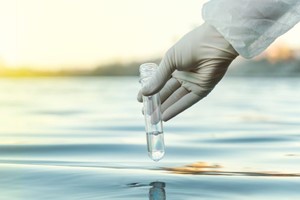The Ofwat Innovation Fund highlights the urgent need for transformative technologies in the water sector to address water quality challenges and promote sustainable sludge management. This initiative underscores the sector's focus on innovation to enhance water quality, reduce environmental impact, and improve the health of rivers, streams, and coastlines.
One of the most pressing environmental challenges is the sustainable management of treated sewage sludge, especially in addressing harmful contaminants like PFAS (per- and polyfluoroalkyl substances), also known as ‘forever chemicals.’ These substances persist in the environment, posing serious risks to biodiversity and human health. Their removal is critical to protecting ecosystems and communities.
Sewage Sludge: A Resource with Environmental Risks
Sewage sludge, a byproduct of wastewater treatment, contains valuable nutrients like phosphorus and nitrogen, making it useful as a fertilizer for agriculture. Annually, the UK produces about 1.2 million dry tons of sludge, with 94% of it reused in 2020 for soil improvement.
However, sludge can harbor contaminants, including microplastics, heavy metals, and PFAS, which originate from industrial and consumer products. These contaminants can enter the environment when treated sludge is applied to land, potentially leaching into soils and waterways, disrupting ecosystems, and posing long-term environmental risks.
To address these concerns, sustainable innovations are being developed to manage PFAS in sludge and wastewater, aiming to prevent their entry into natural systems.
Tackling PFAS with Advanced Technologies
PFAS contamination has become a growing concern worldwide, with evidence of these chemicals present at various stages of the water cycle. Traditional water treatment methods are not designed to break down PFAS, highlighting the urgent need for innovative technologies.
One promising solution is gasification, a process that breaks down contaminants like PFAS into simpler, less harmful compounds. Gasification not only neutralizes PFAS but also manages other pollutants, such as microplastics, contributing to improved water quality and more sustainable sludge treatment.
The Sewage Sludge Gasification Project
A standout example of innovative bioresource management is the Sewage Sludge Gasification Project, a collaboration led by Yorkshire Water alongside the Carbon Trust, Queens University Belfast, EnertecGreen, and several water companies across the UK and Ireland. This project, a winner of the Ofwat Innovation Fund’s Water Breakthrough Challenge, demonstrates the potential of gasification.
In this process, sewage sludge is subjected to high temperatures in a controlled oxygen environment, breaking it down into hydrogen-rich syngas, biochar, and vitrified ash, while destroying harmful PFAS. The project offers multiple benefits, including:
- Energy Generation: Producing up to 50 megawatts of electricity (MWe), sufficient to power the plant and contribute excess energy to the grid.
- Biochar: A carbon-rich byproduct that can be used as a water and nutrient retention enhancer in soils, a filter for wastewater treatment, or an additive in brick manufacturing.
- Vitrified Ash: Usable as an aggregate in construction, reducing concrete's carbon footprint.
Scaling this technology nationally could generate up to 375 MWe, powering over 300,000 homes, reducing carbon emissions, and advancing the UK’s energy transition.
Innovations Beyond Gasification
In parallel, other projects funded by the Innovation Fund are exploring alternative methods to improve sludge and water management:
- Sewage Sludge Pyrolysis: Aiming to build the UK’s first continuous sludge-fed pyrolysis plant, this project focuses on bioresource circularity and reducing sludge use in agriculture.
- PFAS Removal Projects: Led by Severn Trent Water, a team is testing methods to remove and destroy PFAS concentrations in water.
Resource Recovery and Circular Economy Opportunities
Bioresource recovery is essential for a circular economy. For example, recovering phosphorus from sewage addresses both environmental concerns and supply chain challenges. Northumbrian Water’s SuPR Loofah Project, in partnership with universities and other water companies, is piloting an innovative system using algae, fungi, and bacteria to recover phosphorus and tackle pollutants like heavy metals and microplastics.
Such initiatives demonstrate the potential for sustainable approaches, but further research and testing are required to scale these innovations effectively.
From Innovation to Impact
The water sector must transition from reactive regulatory compliance to proactive circular economy models. Achieving this requires collaboration between water companies, regulators, researchers, and other stakeholders to share best practices and scale up innovations.
While challenges like market fragmentation and the lack of centralized oversight remain, sector-wide strategies and operational testing are essential for long-term success. Scaling innovations like gasification and resource recovery systems will strengthen their business case, attract sustained funding, and ensure positive impacts on water quality, river health, and the environment.
As the Innovation Fund report highlights, "unlocking waste as a resource within the water sector requires a cultural shift" and a commitment to sustainable growth.














